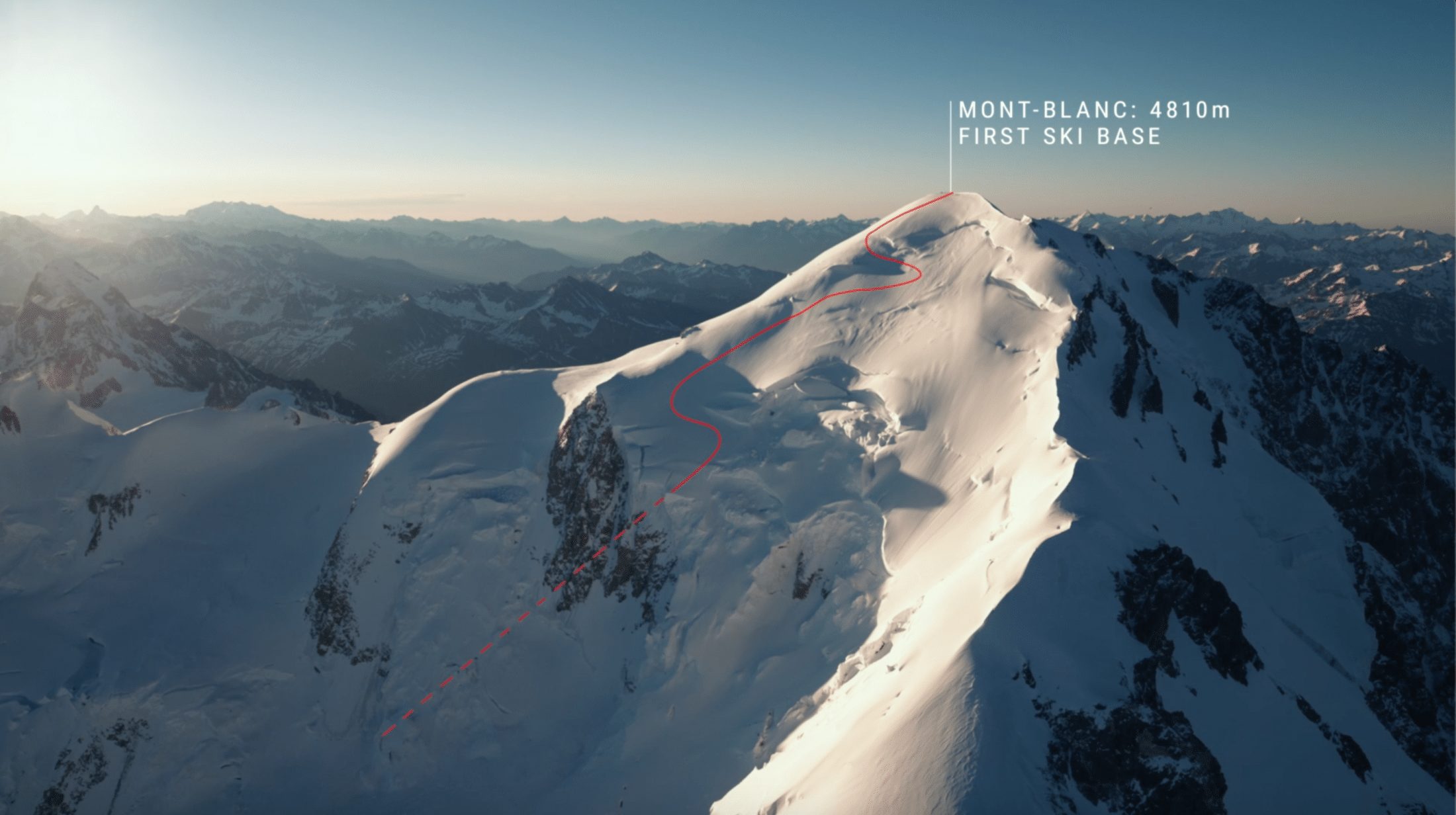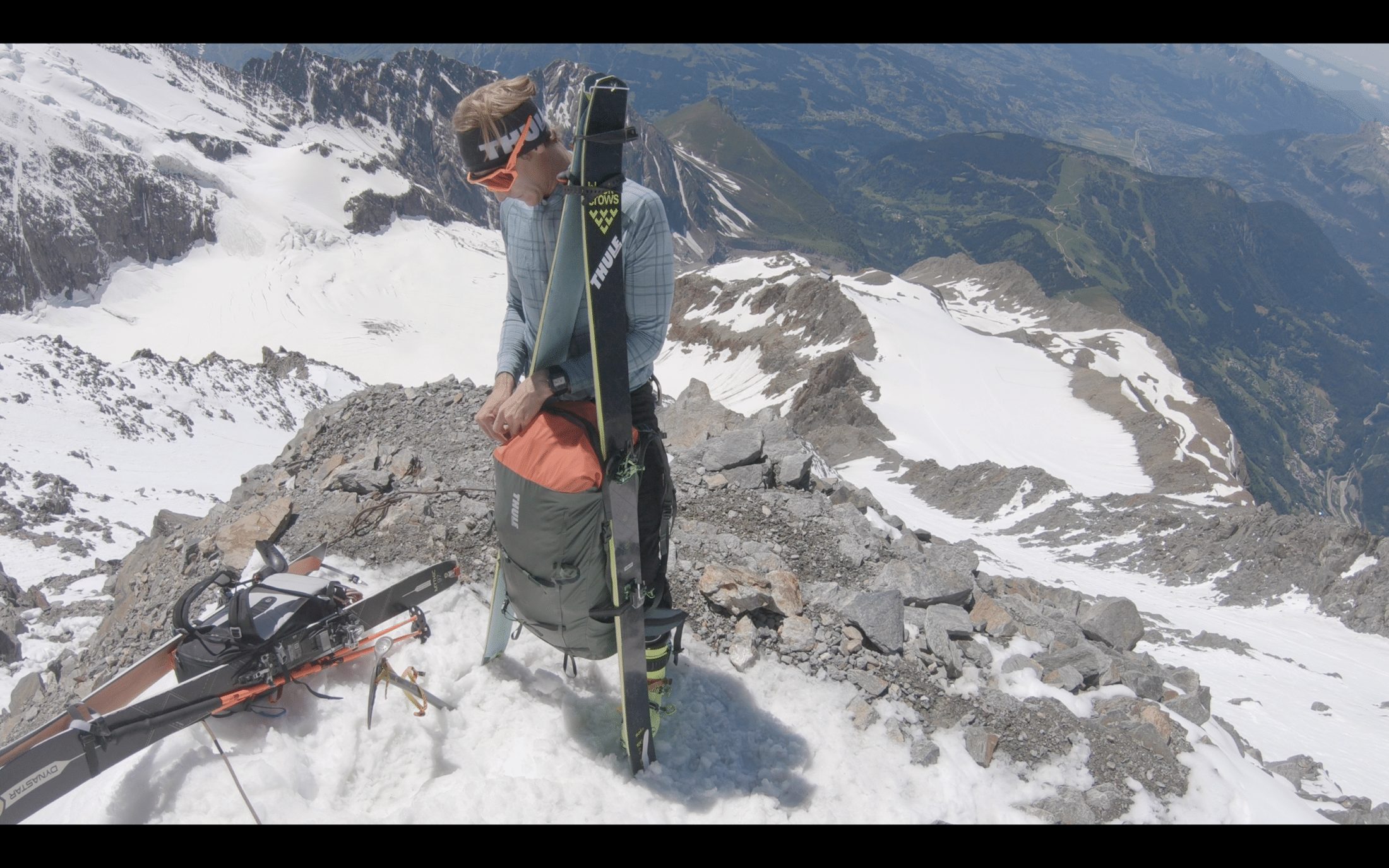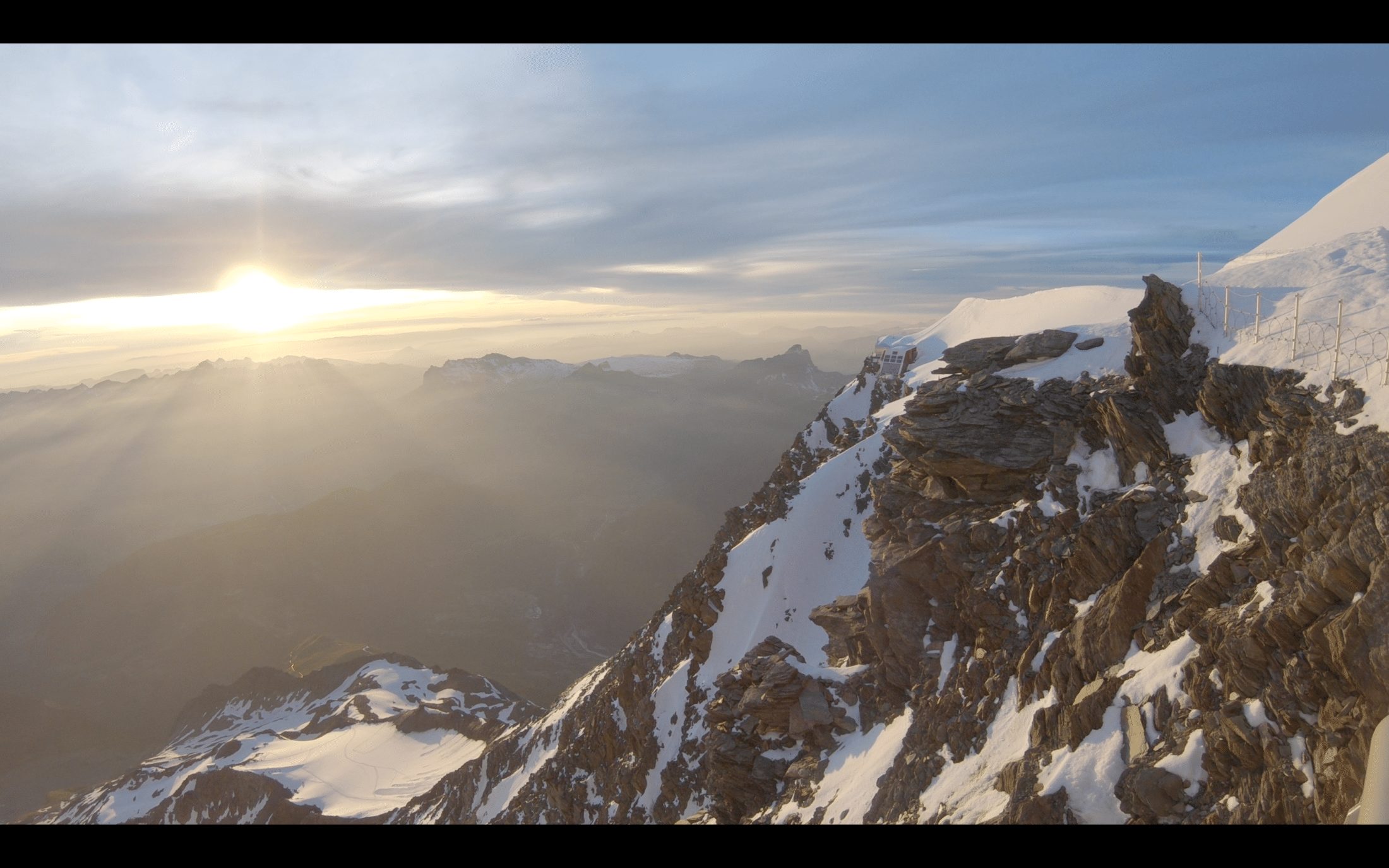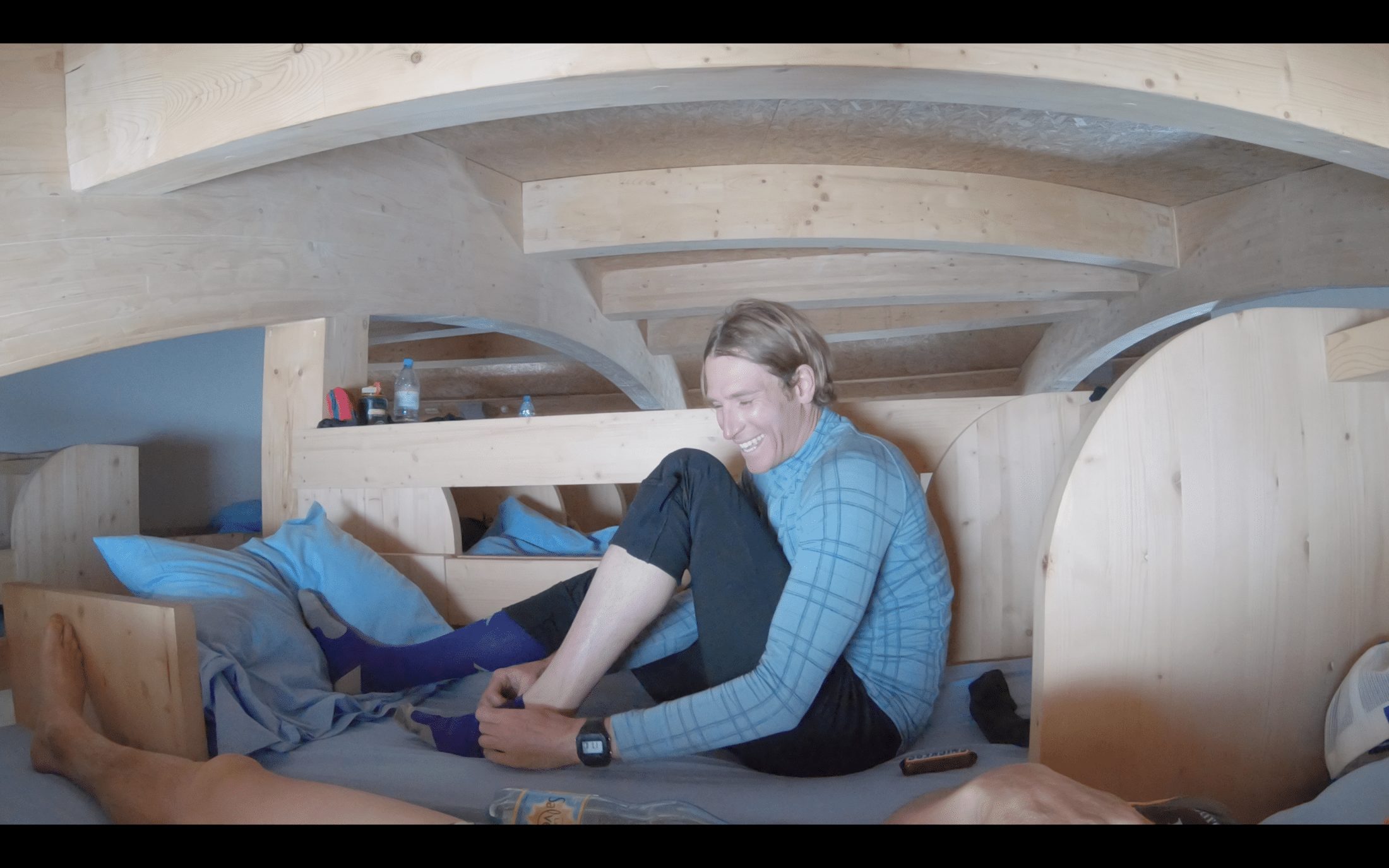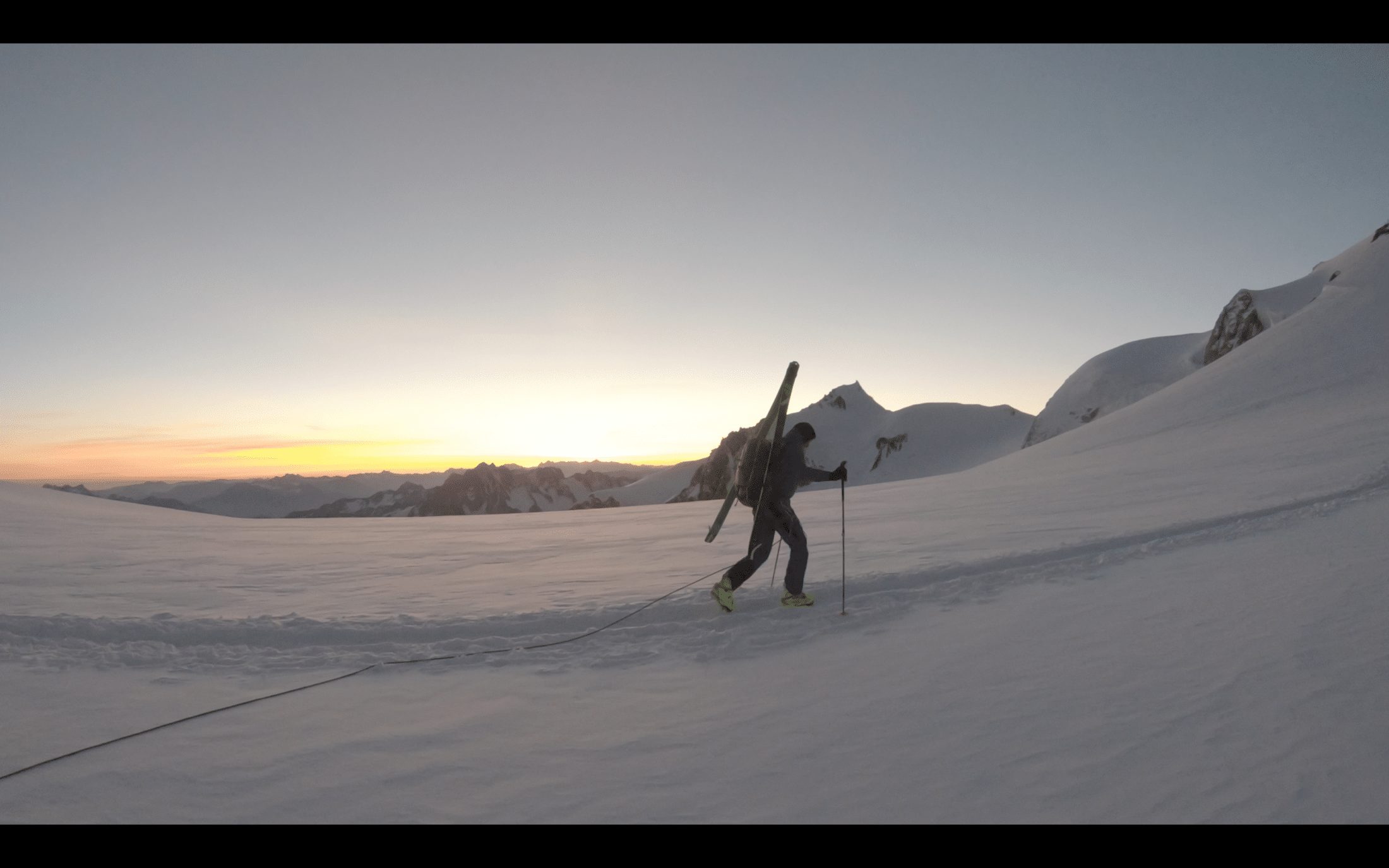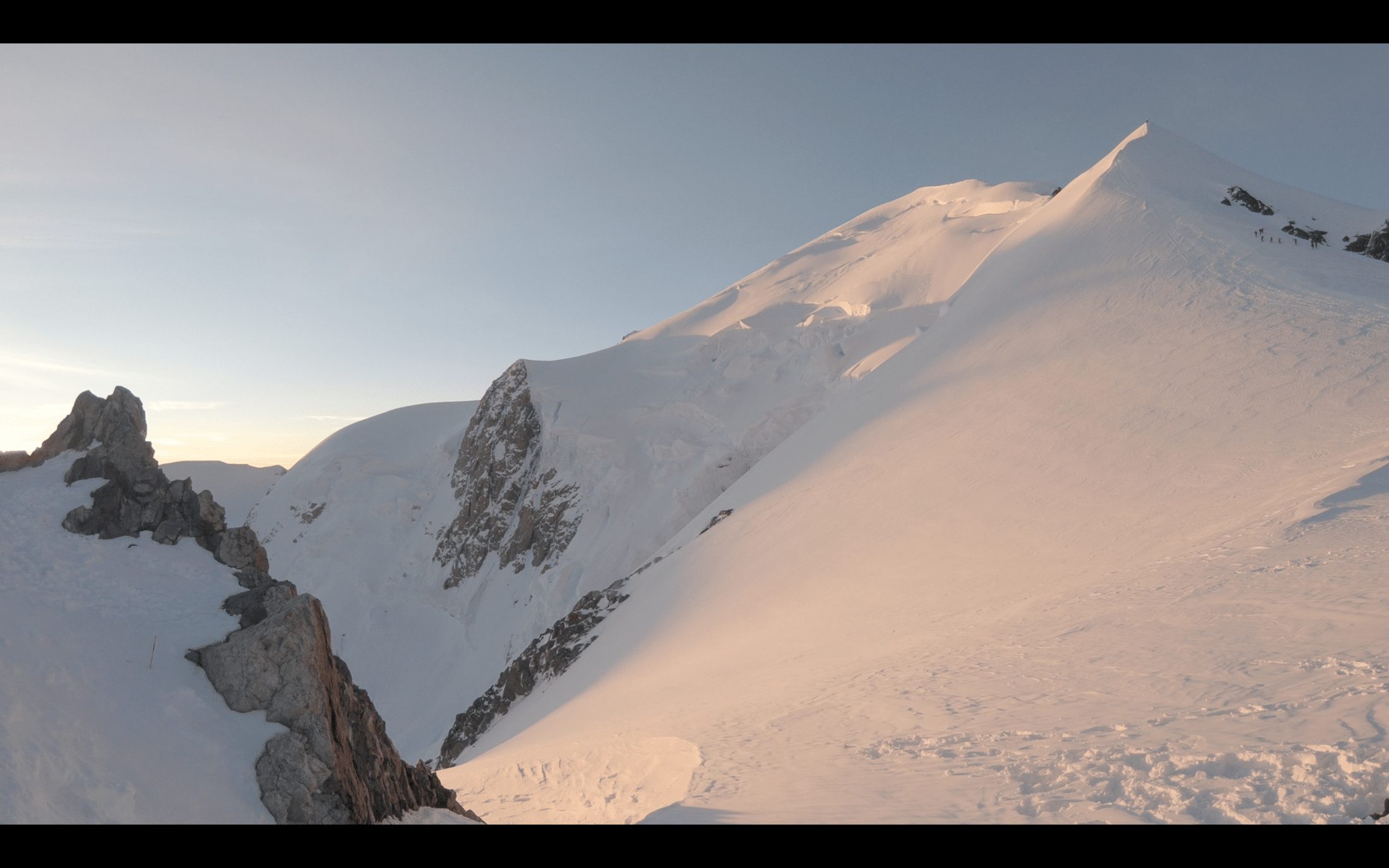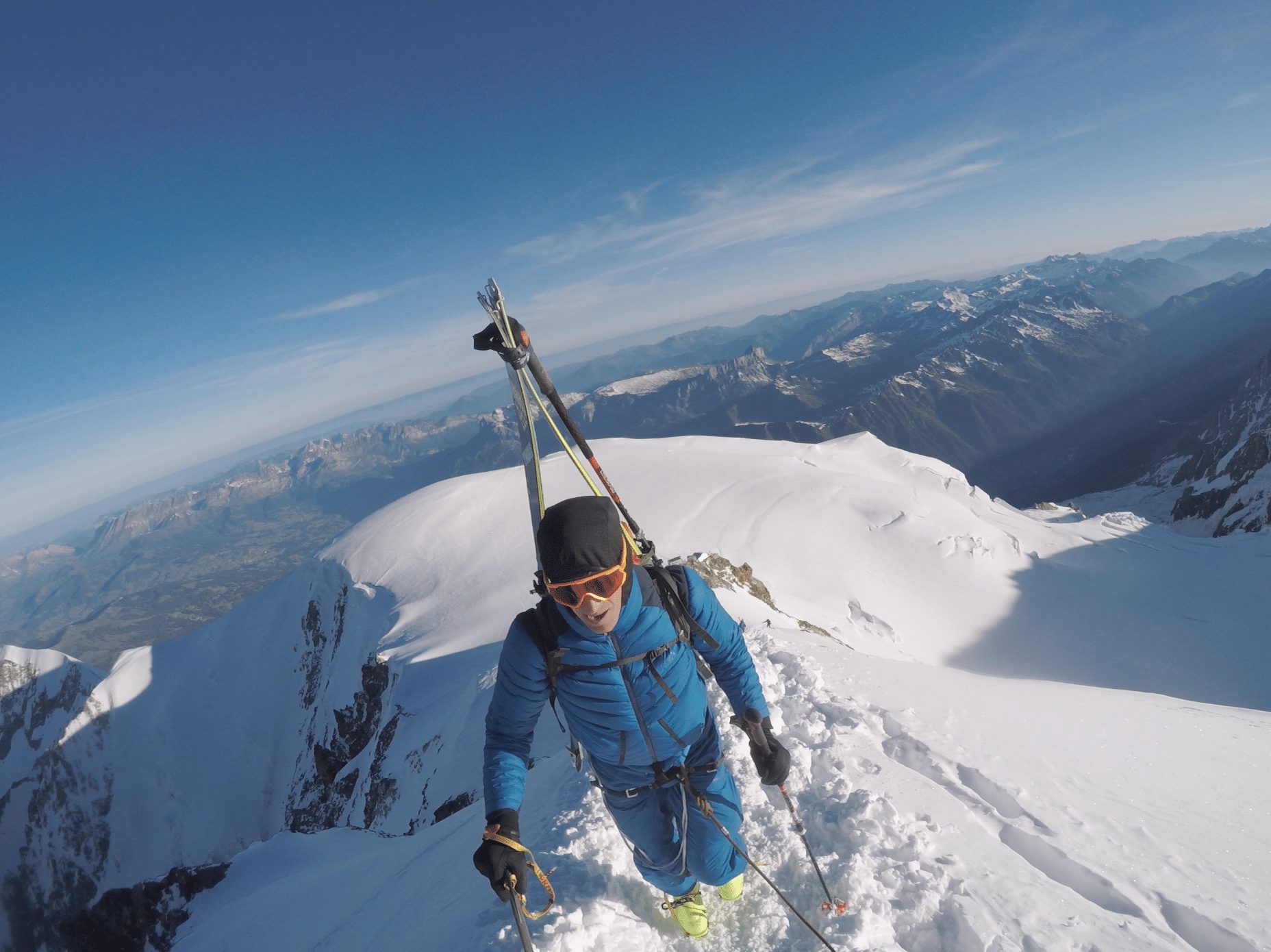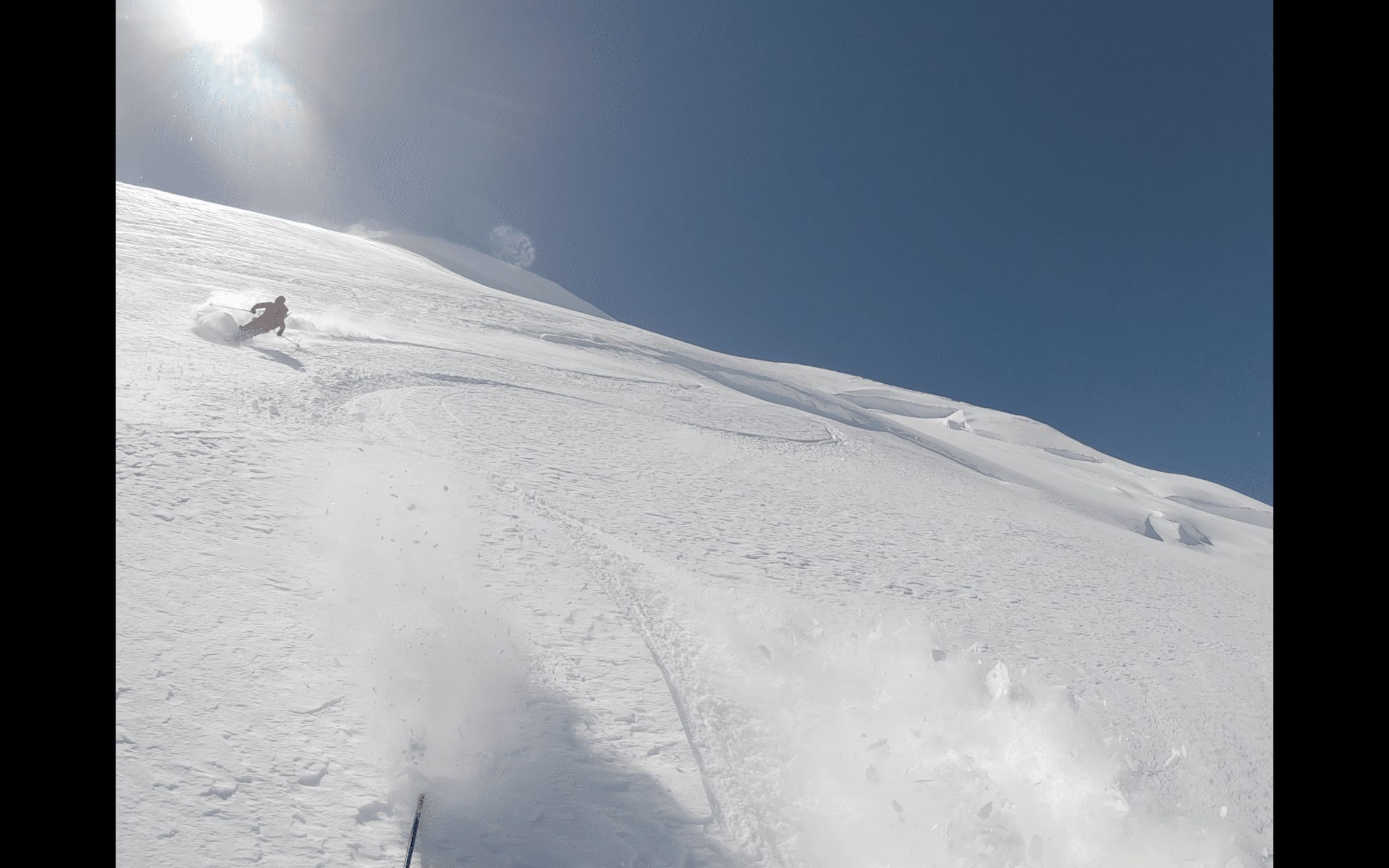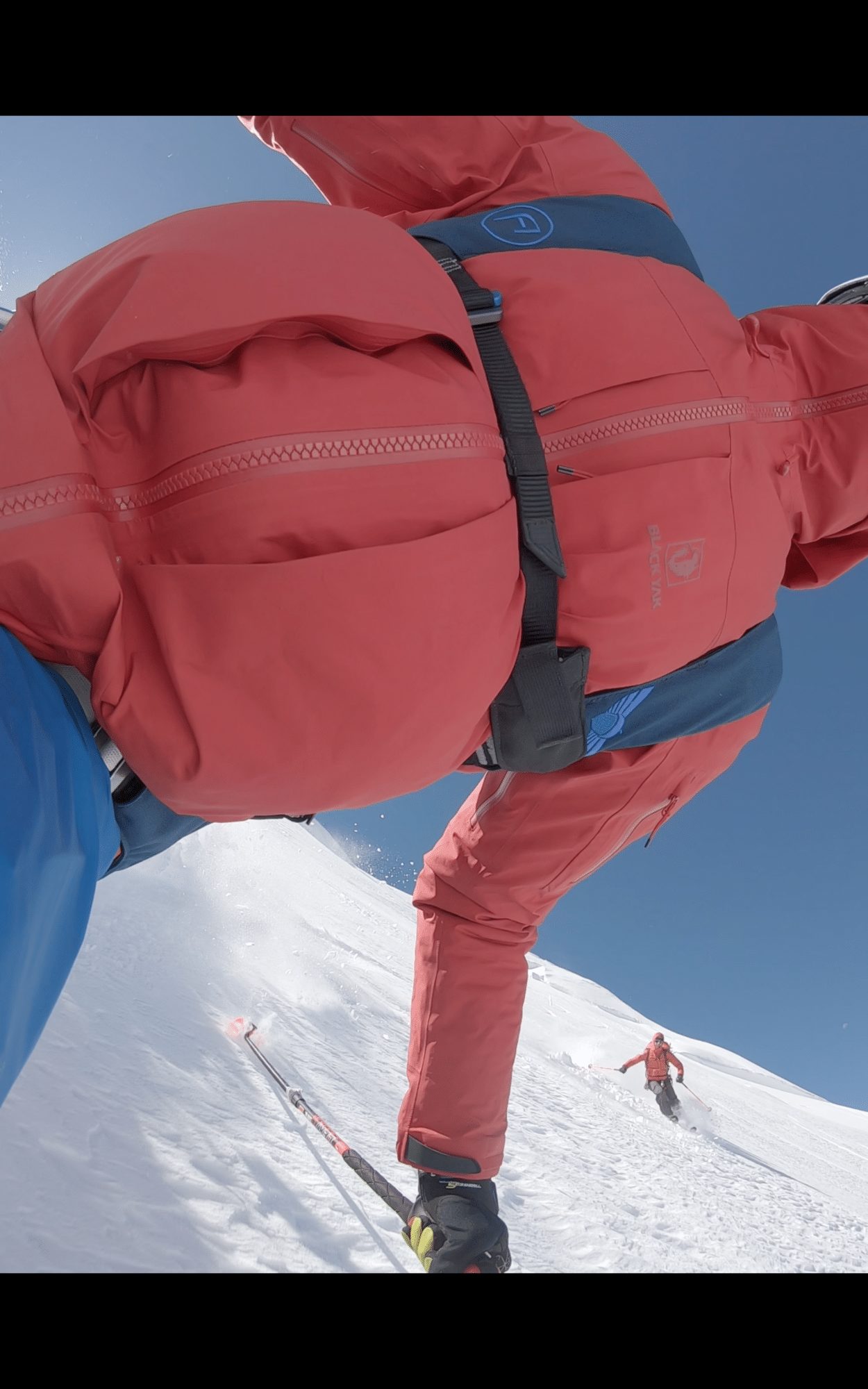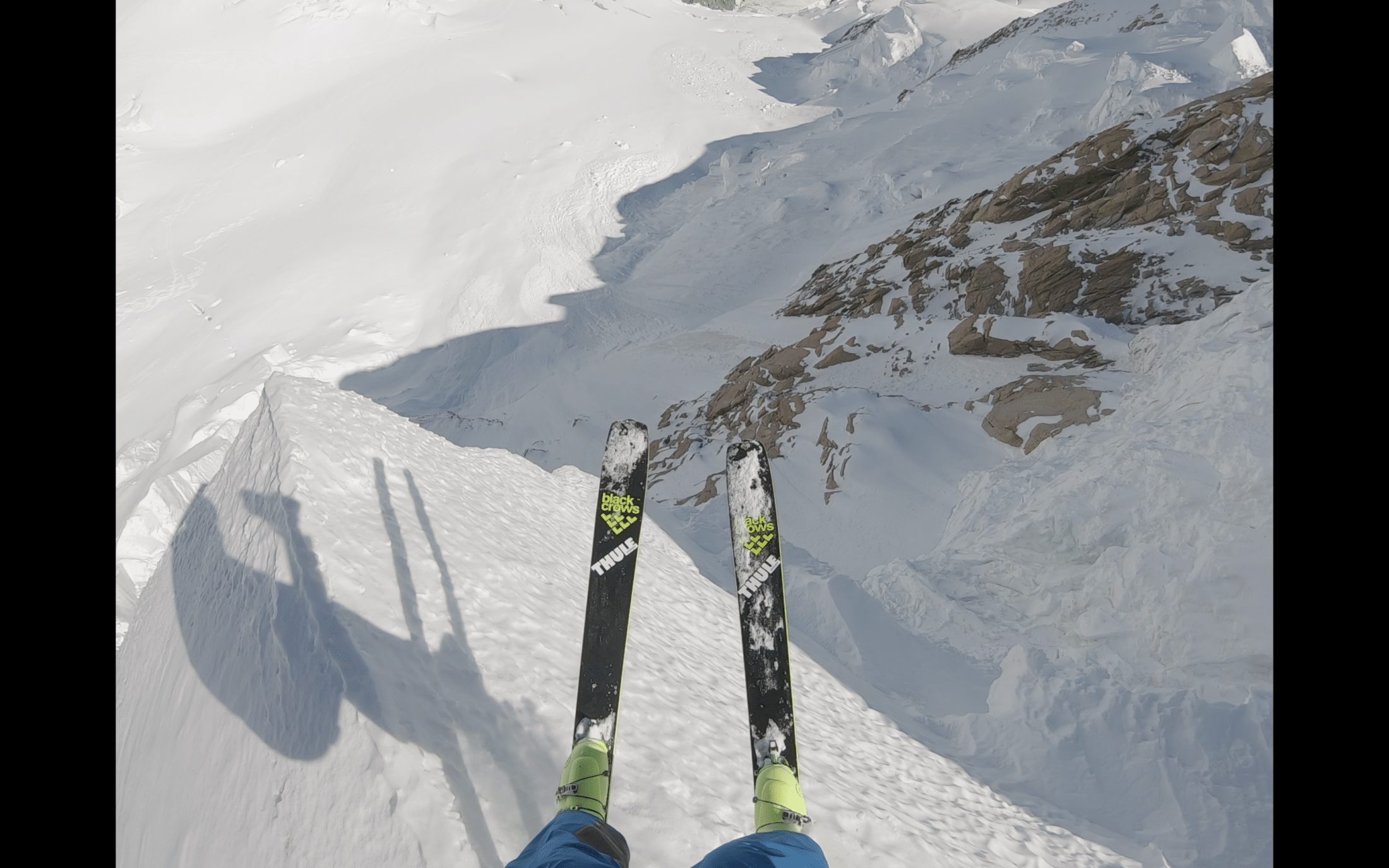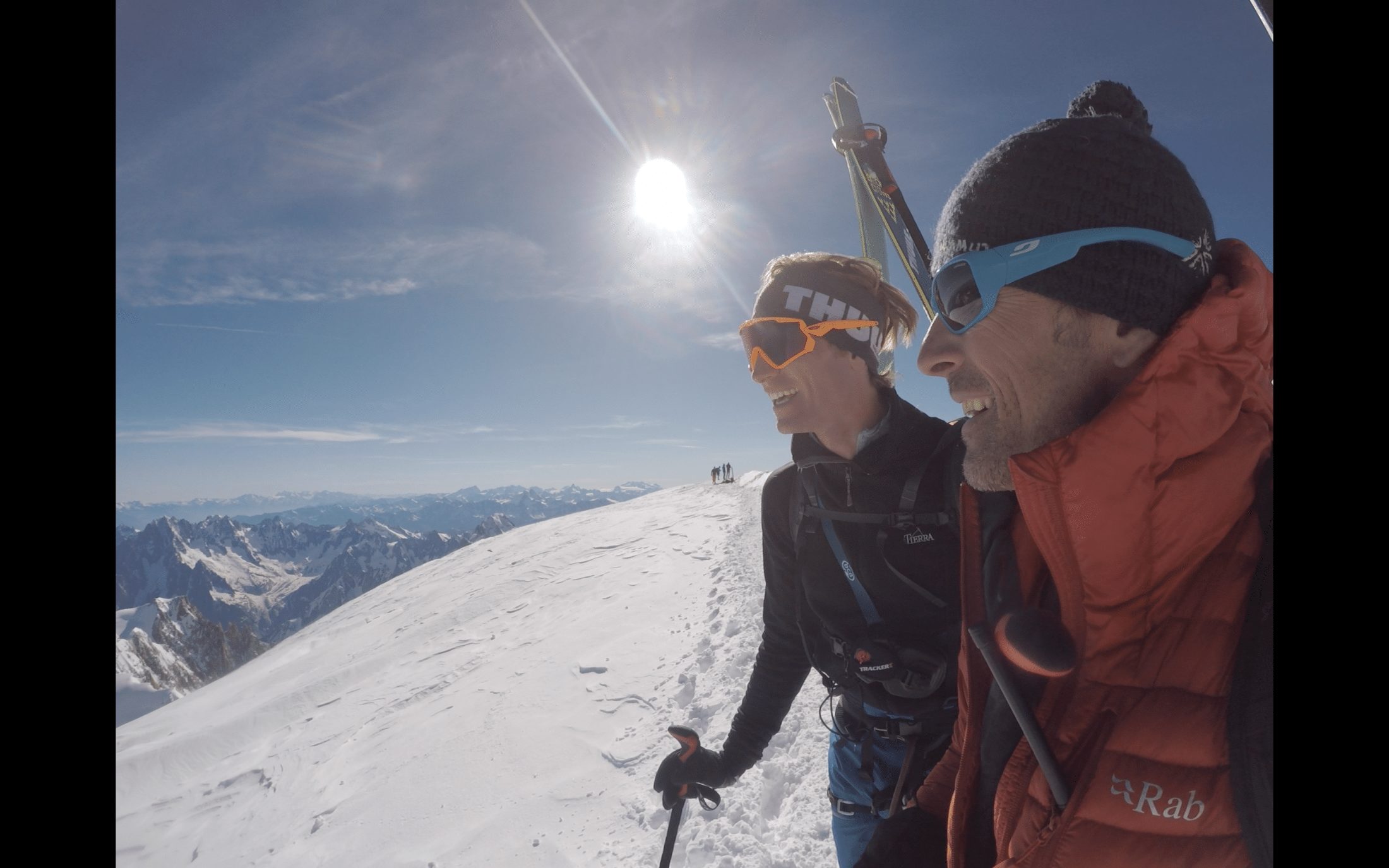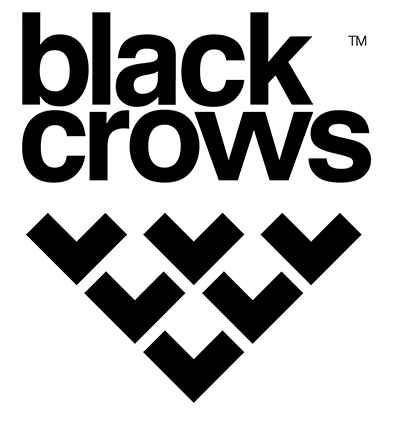The native from Evreux, who ski trained in the Mont Blanc massif, has just realised a childhood dream : the first ski base jump from the eponymous summit also known as the highest mountain in Western Europe.
He has had his eye on this jump from Mont Blanc for six years and he carried it out just as he had hoped, with the force of his legs surrounded by mates and with perfect snow and flying conditions. A week after this performance which forces admiration through his sobriety, aesthetism and engagement, Super-Frenchie stopped off in Chamonix to raise a glass to the event and tell us how the two days in the mountains, which led to a direct track and the unfurling of a parachute at 4 400 metres of altitude, went.
Black Crows: This idea of Mont Blanc, is it a project that you have had for a long time ?
Matthias: Yes, I’ve been thinking about it for eight years. In 2010 I jumped from the Eiger. Once the jump was done, I wondered what else I could. And well… The Matterhorn (laughter). So, a year later, I did the Matterhon. It was a bit touch and go because I hit a rock just as I jumped and I went into the north face in a spin, but it happened. And so, after the Matterhorn, the classic alpine trilogy, it had to be the Mont Blanc. In pure mountaineering, it is more Eiger-Matterhorn-Grandes Jorasses and I had looked around the sides of the Grandes Jorasses. I saw something near the Linceul and a serac on the Italian side, but it wasn’t large enough. So, I concentrated on Mont Blanc and I scouted around on the Italian side. But after seeing the serac under the Roches Rouges on the French side, I concentrated on that.
Black Crows: So you waited for the right conditions ?
Matthias: Yes, it is very complicated because you always have a wind up there. Accumulating good snow conditions and no wind, doesn’t happen very often. Observing the paragliders, it is often in May and or September that they can have the right conditions for landing on the summit of Mont Blanc. That, in general, is when the conditions are super calm. In 2013, the year of my accident at the pointe d’Areu. This was a project where it was possible to mix a long approach with a bit of ski mountaineering, steep slope and base skiing. So for me, it was a sort of approach walk before Mont Blanc. But because I screwed it up, I had to start all over again and it delayed this project.
This year at the beginning of June, while I was at home in the US, the magic of Instagram worked (laughter). My mate Julien Pelloux had gone up Mont Blanc and it was really good weather, no wind. At that point I said “shit” I’ve missed the day, so I asked Julien to tell me how it was because the weather was showing thunderstorms and rain. He told me that it was beautiful in the morning and that it deteriorated with summer storms in the middle and at the end of the afternoon. I decided to go and see for myself and, as the weather was bad until the 16th, which would add snow up there, then be good before deteriorating again, I left on the 19th. This would leave me a small window before July 1st. As from that date, one can not fly in the massif because it is necessary to leave the air corridors open for search and rescue reasons.
I took a chance on the 10 last days of June. I had seen that the 23rd and 24th would probably be the best days. But because it is now obligatory to book a night at the Gouter hut, we got lucky because there were only two places for the 23rd left. We went up to jump on the 24th… And we had perfect conditions.
Black Crows: Did you go up the classic route with the Tramway du Mont Blanc ?
Matthias: Yes, we took the first train and, from the Nid d’Aigle, we climbed up on skins. But before that, we had made a last recce trip on at 6 o’clock in the morning by chopper to check where we were going to ski and where I was going to jump from. I wanted to see if the features of the serac had changed. I took new measurements and I estimated that it was only 60 metres and not 75 metres as I had thought after having measured it the first time. I must have measured at the point of impact, not vertically. Then, I began to freak out. More than anything from the helicopter, everything appears flat. I couldn’t see the angle of the slope below the serac. Too many questions, too many things in my head and it was almost panic stations. So, we went back down and I wanted to vomit. I didn’t feel well. I think that it was stress rather than the helicopter (laughter). And it was then that Alex Perrinet, the guide, pronounced the right words. We had gone to have a coffee and he said to me : “We won’t know until we get there. We’ll go up anyway. We’ll spend the night in the hut and you’ll make your decision when you’re up there.”
I also had an alternative solution, which was to jump from the aiguille du Goûter, but I really wanted to ski from the summit. So, we went up and put on the skis. And then I felt a whole lot better. That shows at what point it is important to connect with the mountain, to nature. One needs to be immersed in it to evaluate it. The chopper is a great tool, but you’re so disconnected, and even if you have the measurements, you don’t see the scale of the thing. But, as soon as I had put on the skis, I was able to take in to account the proportions, the slope and the quality of the snow. And so, even before having seen the serac, I knew that it would be really good. I was 75% sure that it was going to happen.
We arrived at the Tête Rousse (intermediary hut Editor’s note). We had a rest because we had 20 kg on our backs. It is necessary to keep a clear head for jumping and, for that, one can’t burn oneself out. So we climbed peacefully, more than anything it was hot. We took on some carbs and attacked the Goûter gully. It was a bit rough traversing it because one must run, and with 20 kg on one’s back, there was no way of doing so ( there are numerous stone falls in the gully, so it is necessary to traverse it as quickly as possible, Editor’s note). So we walked very fast (laughter). Then, in the rocky part, with the skis on the packs and the weight, it was really hard. But well, one foot in front of another and you finish by getting there. My aim was to arrive at the hut because it meant getting to the summit. The hardest part was behind us. This climb among the scabby rocks with skis and 20 kg on the back, I knew that we were going to be knackered.
I was tired, but I felt good. And there, once again Alex was super cool, because he helped me to manage my effort. That was being more than a guide, that was a coach. Once arrived, he said to me: “ you are going to sleep badly this evening. I have brought you some ear-plugs, the meal is in an hour and a half, go and have a siesta, that will be the best sleep you’ll get between now and tomorrow.” I slept like a log for an hour and a quarter, perfect for recharging my batteries. At 7 o’clock, we went to bed, but you don’t really sleep before getting up at 2am. You rest. I was a little afraid due to a tendinitis which had occurred during training. But all was going well, I felt really good.
We left at 3:30, skis on our backs because the snow was super hard and, upon arriving on the Dôme du Goûter, the sun rose on all the northern face. I would be able to see the serac. At that point, I was 100% sure to jump. A small morning breeze, but all was calm, the snow had the air of being really good. There were two good tracks in the middle of the face. All that remained was to arrive at the summit. And, because we were ahead of the chopper, we stopped at the Vallot (the Vallot shelter situated at 4362 metres, under the ridge of the summit, Editor’s note). There again, we were able to manage our effort because with 20kg on the back, the altitude is violent. Afterwards, on the ridge, there was a 30kph wind. If I had seen this on the weather forecast, I would not have gone up. But in the mountains, unless there was the risk of a big storm, it is necessary to be up there in order to make a judgement. We are so used to having an aided intelligence that we forget to connect with nature and our own instinctive intelligence.
By 9:45, the chopper had arrived and I was able to see the snow flying across the face. If it had stayed so light, it would be protected from the wind. It was used as an air channel for my jump. On the other hand the chopper as soon as he was a little bit over it, stirred it up all over the place. There was an altitude wind that was supposed to be blowing at 5,000 meters. Together with Alex, we started the descent and it was as soft as the fluff of January. With the solis, a touring ski which skis like a downhill ski, it goes really well. Sometimes, I use this ski in the resort and I carve my turns. It is a ski which really responds, goes really well.It is perfect for this type of challenge.
Black Crows: As for the parachute, did you use your usual equipment ?
Matthias: As the serac was quite short, I didn’t want to crash with my puller stuck behind me. Because by the time you pull it, it makes your opening longer. You have openings that will take 50 meters, while if I put the puller in my hand, the opening is 30 metres. But that’s at a normal altitude with a normal base jump. So I calculated that with a ski base jump, if you arrived at the bottom of the box, between the moment when you pulled and the moment that the parachute opened, that would have been 20 metres. After that, you have to take in to account the altitude, if one works on the basis that there is 30% less air up there, that made, give or take, for an opening at 26 metres. I added a fall of 10 metres, that made 36 metres. Knowing that the serac was 60 metres, I told myself that I would open at around 2/3 of the serac. Making it 10 or 15 metres before the rocks. I had the impression of having a margin of error, but the rocks were going to stick to my arse. So it would be necessary to go with the puller in my hand.
Black Crows: And the poles, what did you do?
Matthias: Above the serac it makes a ramp, so Alex would be able to continue skiing while I would jump, then we would meet on the big plateau. As a result, I left my poles with him. We left nothing up there behind us. When I am not able to recuperate them, I use bamboo poles. But it is a shame to leave things in the mountains even if they are bio-degradable. So I gave my poles to the guide and held the puller in my hand.
I attacked at around 100 metres before the serac. But there the snow was completely different from the powder above. It was crud, it trapped my skis. Without poles, you have less balance and I almost fell. I tightened my abs and buttocks. So I had to turn right but the more I tried to turn, the more my skis got stuck. I had to find the right balance to put the right pressure on the edges, but not too much so as to shove them in and put me in the air. So I was a little unbalanced at take-off with the skis which parted to the right and the upper body which parted to the left, but I managed to recover and open correctly at around 15 – 20 metres from the rocks. Afterwards, I bought my old coach from Saint-Nicolas-de-Véroce a drink. Because, all those years of bending poles saved me, 20 years later, on rotten snow on Mont Blanc. Skiing is the art of adapting and sometimes it is art which saves the day. And that was exactly it. I didn’t even think about what I had to do to get out of that situation.
After that all went well. I was under the canopy. I saw the serac and the summit. It was a liberation. I had trouble believing that it was true, that we had succeeded. When it takes you such a long time to look for something to do, you have bit of trouble realising that it has come to fruition. After a nice flight I landed on the grand plateau. There were two or three crevasses so I let myself glide until I joined the tracks to the Grands Mulets (another hut often preferred for ascensions on ski, Editor’s note) where I knew that it was less dangerous. Then, Alex joined me and we shouted like kids. It was brilliant. We redivided the equipment and were able to ski to the Grands Mulets. But in the end it was the coup de grace because there was not enough snow to ski to the Plan de l’Aiguille (intermediary station of the Aiguille de Midi cable car, Editor’s note) After this last effort, we returned to Chamonix at 1pm, which meant we had spent 28 hours on the mountain.
Black Crows: Alex, the guide, how did you meet him ?
Matthias: Alex Perinet, was the guide who accompanied me during my second attempt on the pointe d’Areu, that of my accident. For a guide, it is never agreeable when a client injures themselves. And when I returned in March of this year to make a new attempt on the Areu, he couldn’t come. He was happy for me, but disappointed to have missed it. Mont Blanc allowed us to realise a positive project instead of leaving it on an accident in the mountains. After all, it was Mont Blanc and, for those of us who have grown up here, it is the mother of all mountains. But at the start, when he saw me leave with the skis in the crud and that it fucked me before I jumped, it was a flash-back to the Areu. He saw me disappear and then nothing. He saw the helicopter flying and still no canopy. He thought that I had messed it up. And then, he saw the canopy and was so happy.
Black Crows: And who were the film crew?
Matthias: My mate Stéfan Laude of Fresh Influence was supposed to come because he is often my partner in the mountains. It is he who follows me speed-riding and he is completely autonomous in the mountains. Unfortunately he couldn’t come on the 23rd for professional reasons. So I called my mate Antoine Friou of Ivress Film who was at the collège de Varens with me. I had seen him in March and the Mont Blanc project developed naturally. So it was a project that developed among friends. Alex, Stéfan and Antoine. And then, there was Max, one of Antoine’s assistants who had climbed up to the bottom of the Gouter gully to film with a drone while Alex helped to film with a steady-cam.
Even if Stéfan wasn’t able to be there on the 23rd, he had the time to come up in the helicopter on the morning of the 24th. So I had Antoine and Stéfan above me. And when you are up there, in your bindings, with your parachute, your helmet, the cameras rolling, that you have your mate with you ready to ski the super fluff and that you see other mates above you in the chopper… I was truely happy. It was a project between friends realised on foot, without leaving anything in the mountains except for our tracks. Yes, we used a helicopter for the filming but I think that that has a minor impact. So we did it right, with elegance and friendship.
From the exterior, you only see a guy riding, but you have all the guys are are involved within and that creates a synergy. I think that it is essential to do projects like this. One has to have a small solid team. I think that doing projects like that is indispensable. I owe them big time. All I had to do was walk, ski and jump, they did everything else for me.
